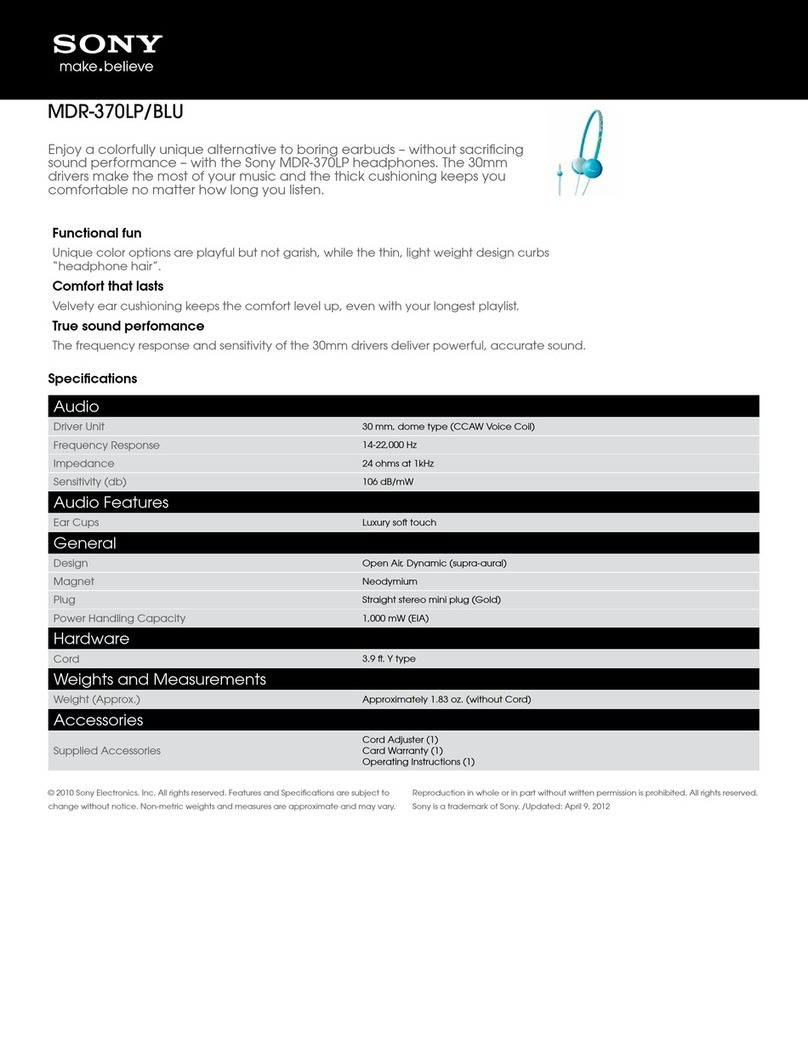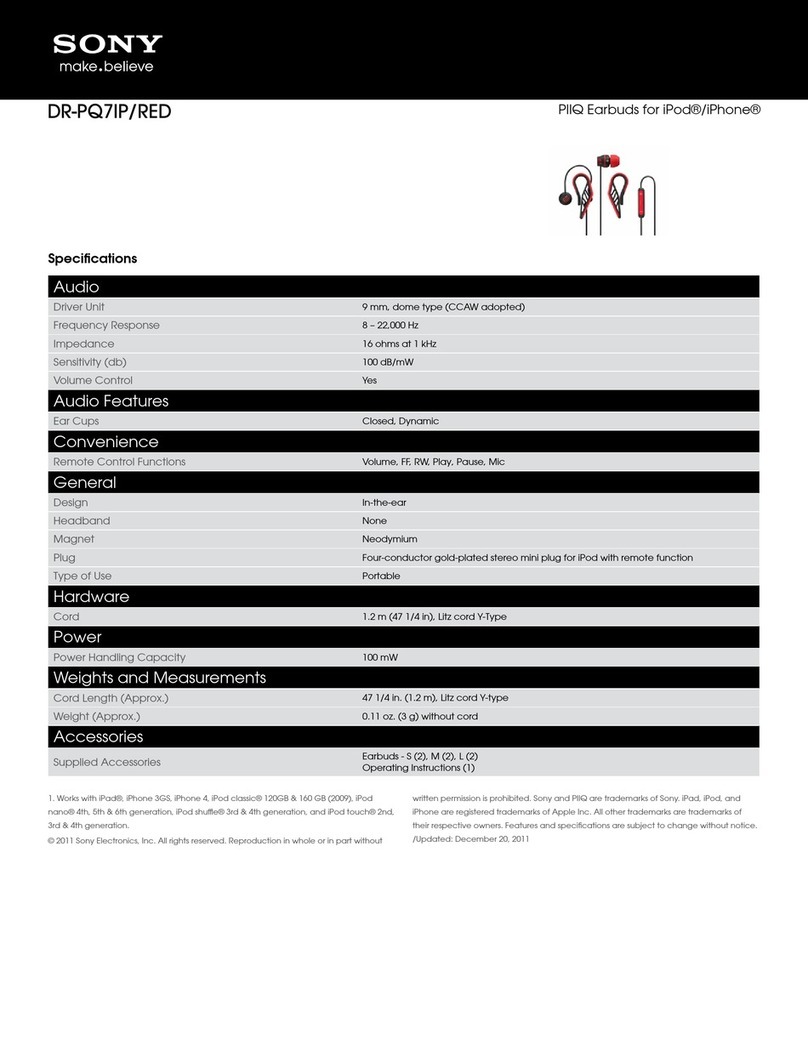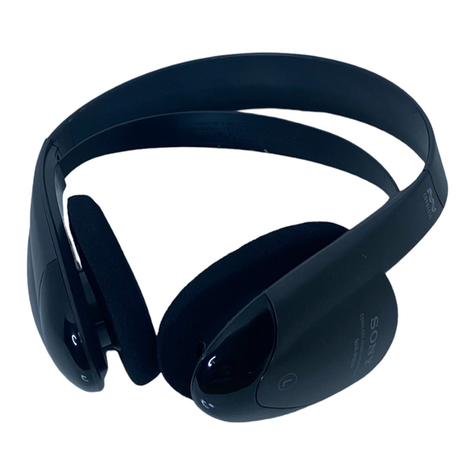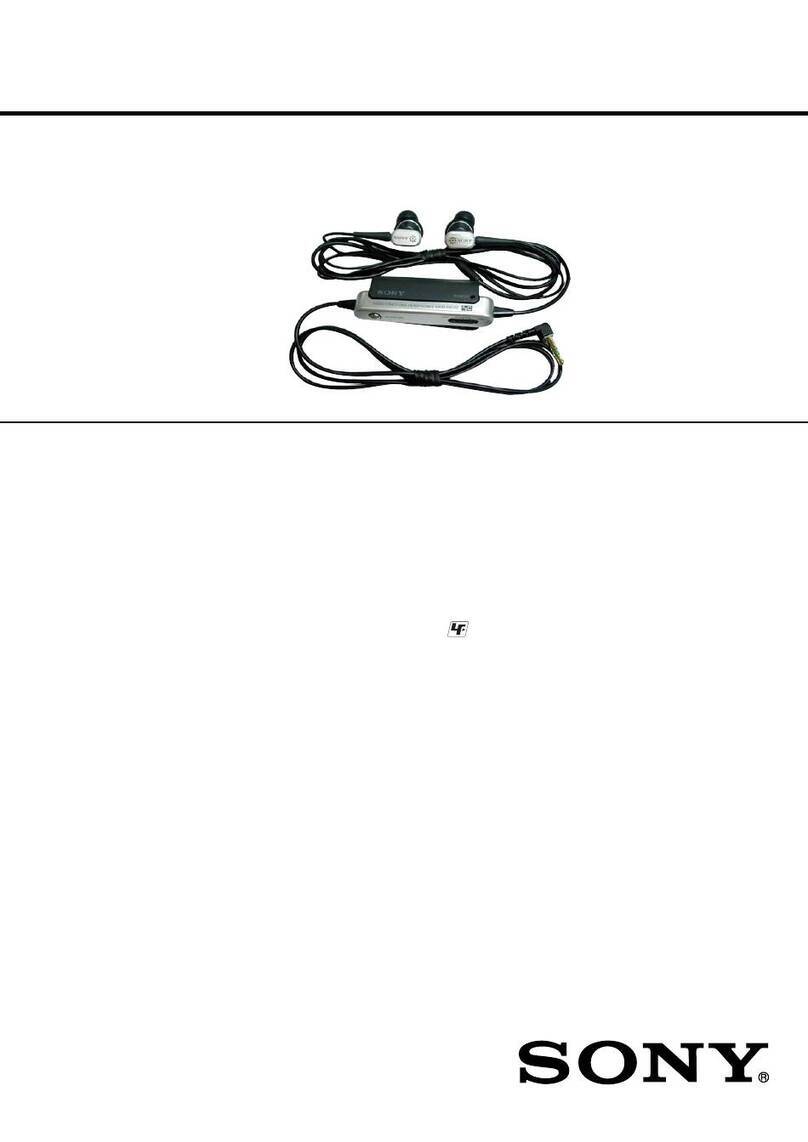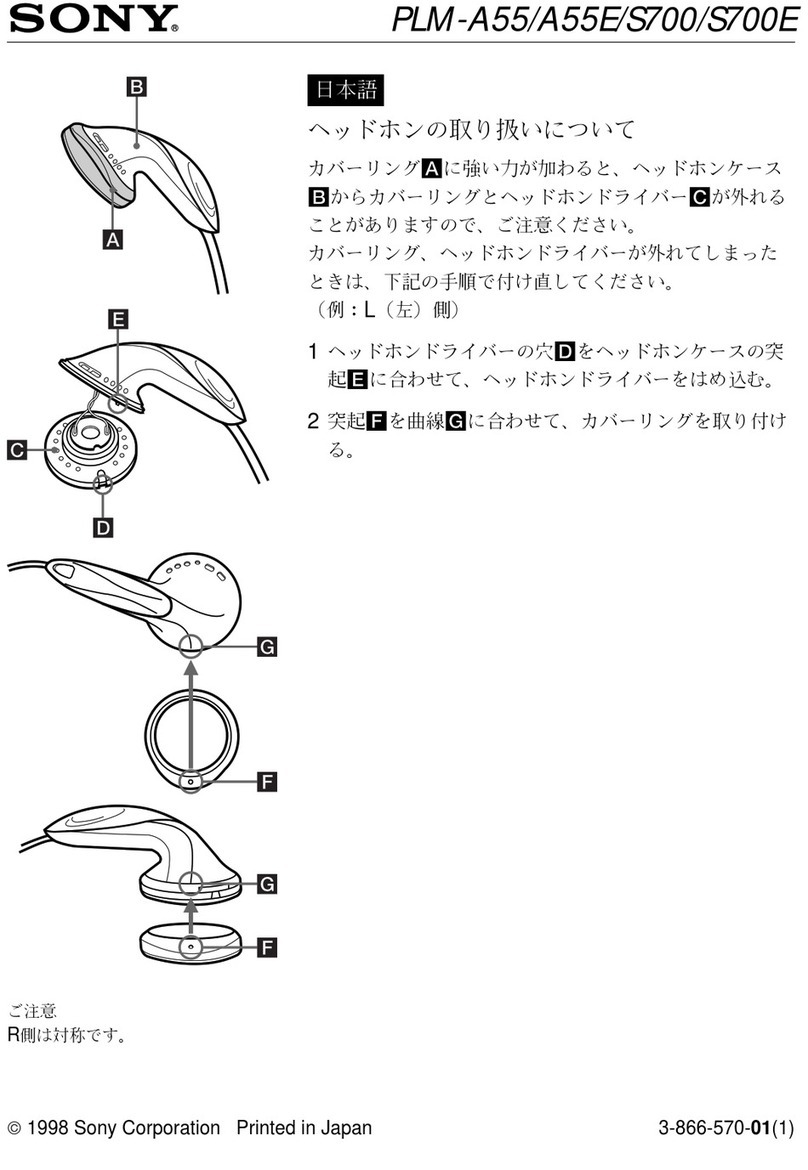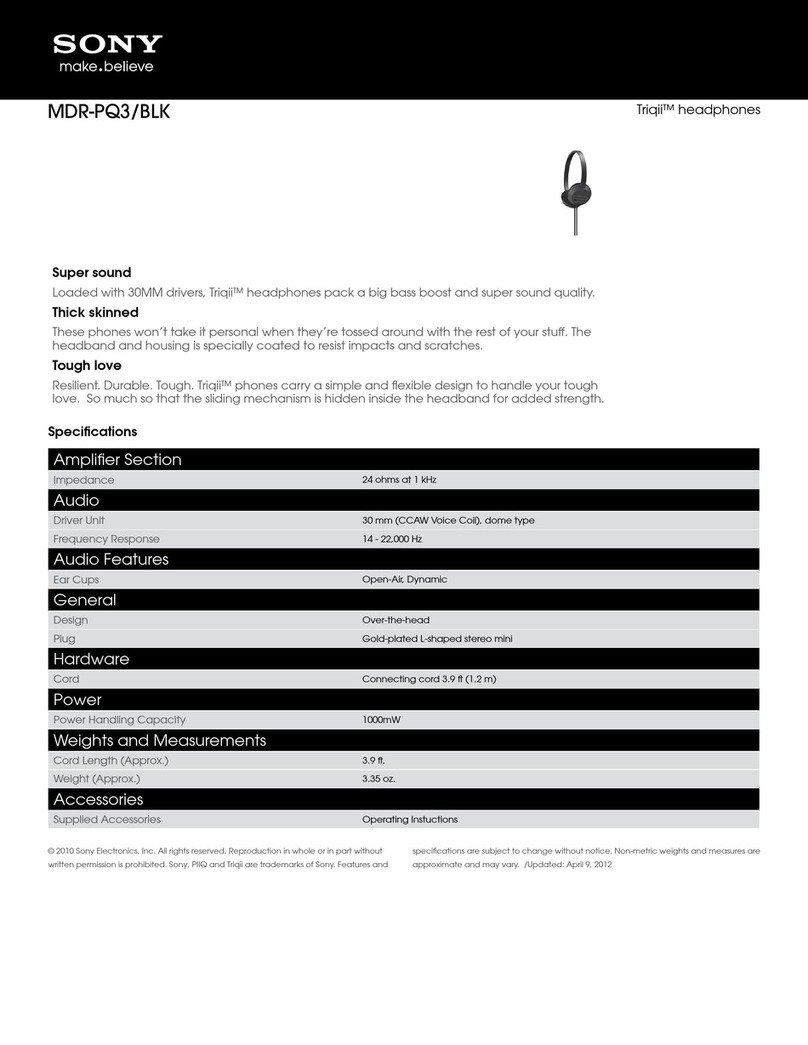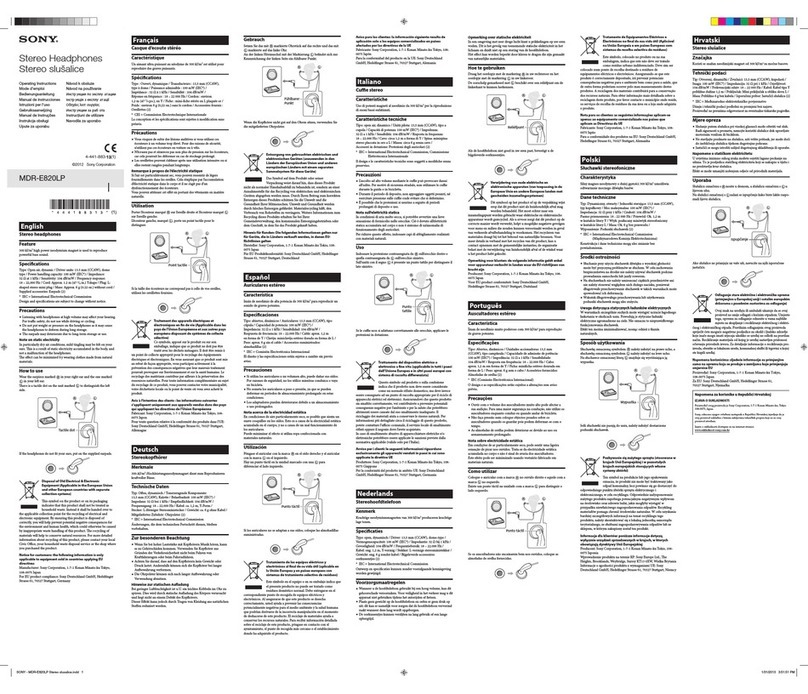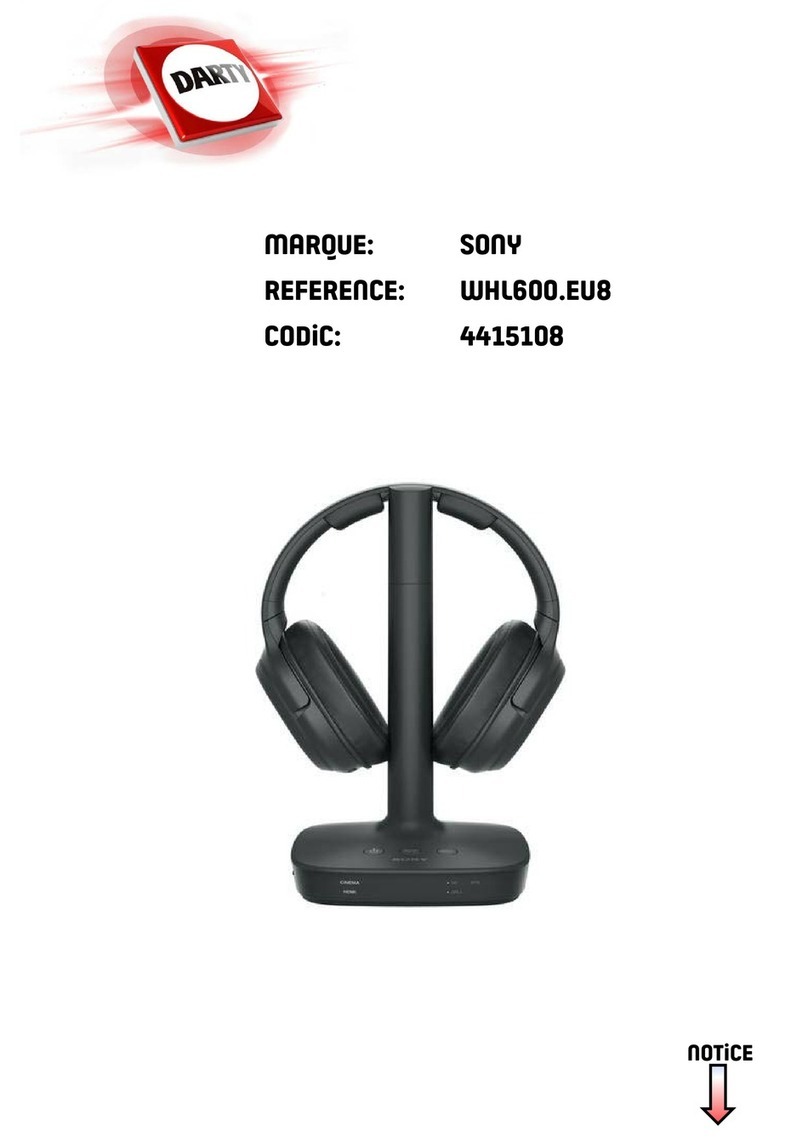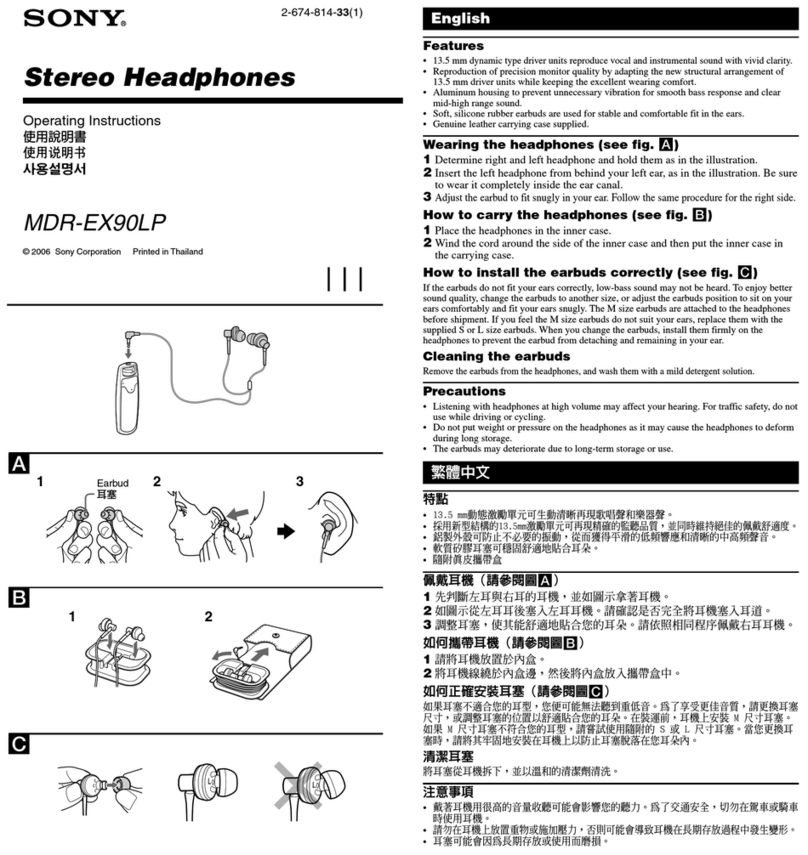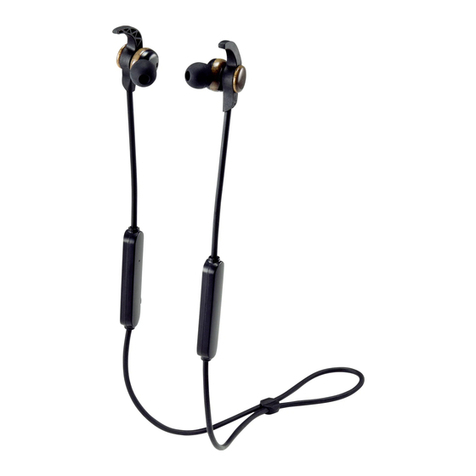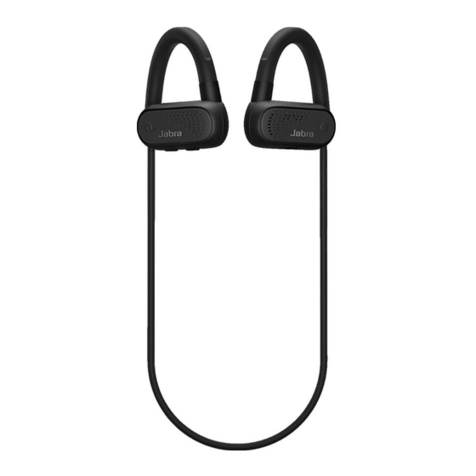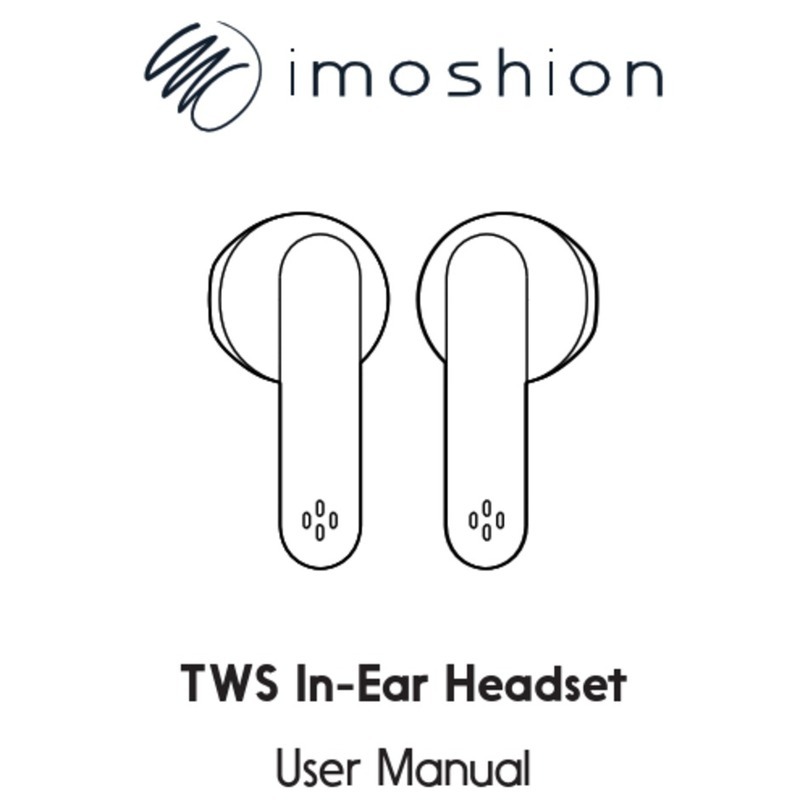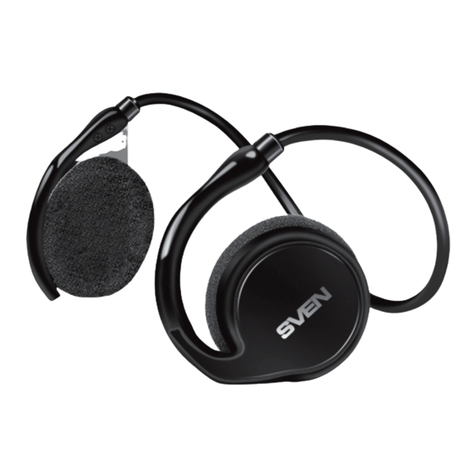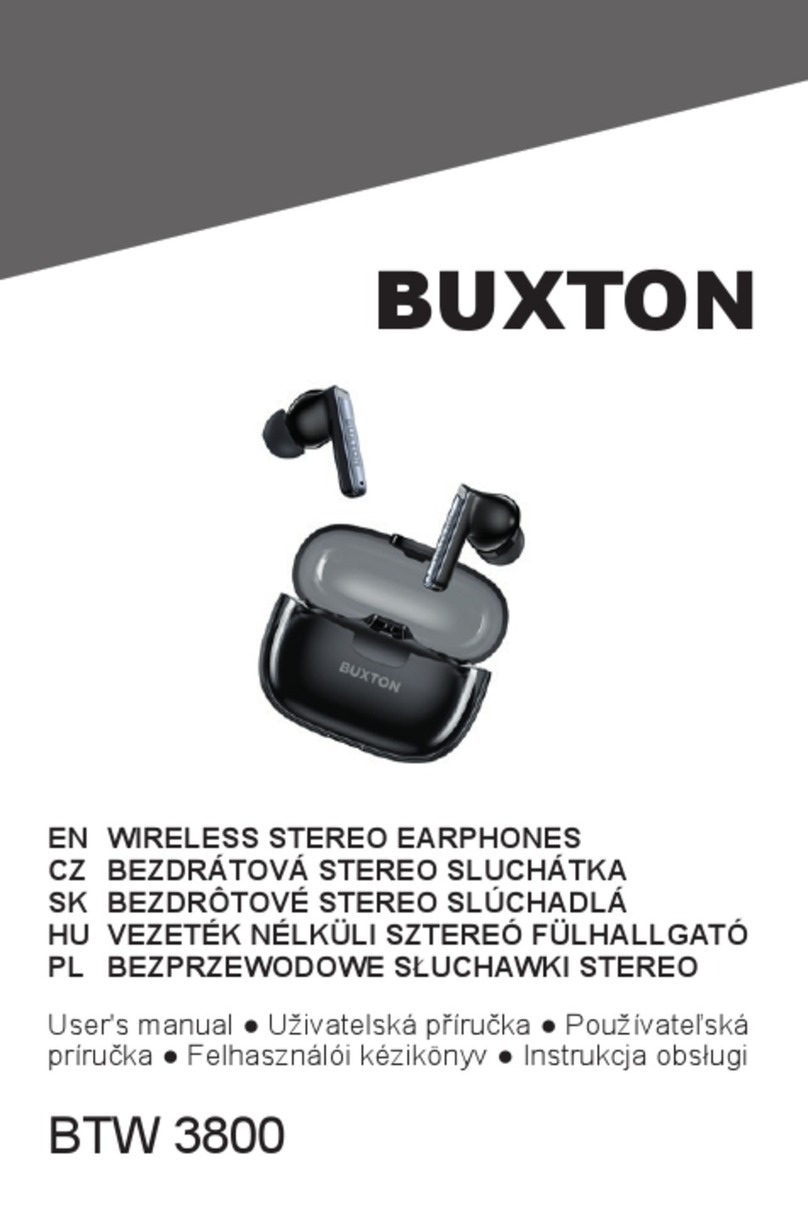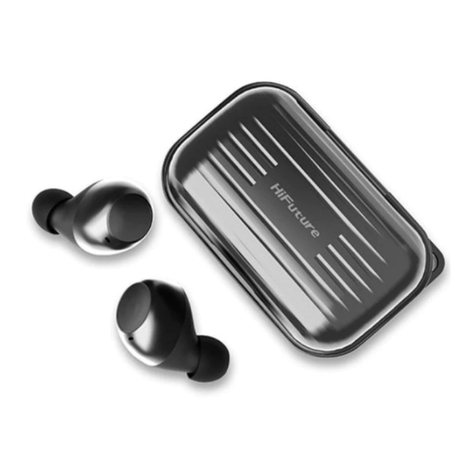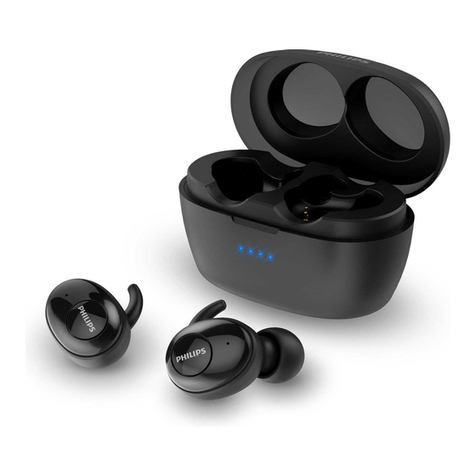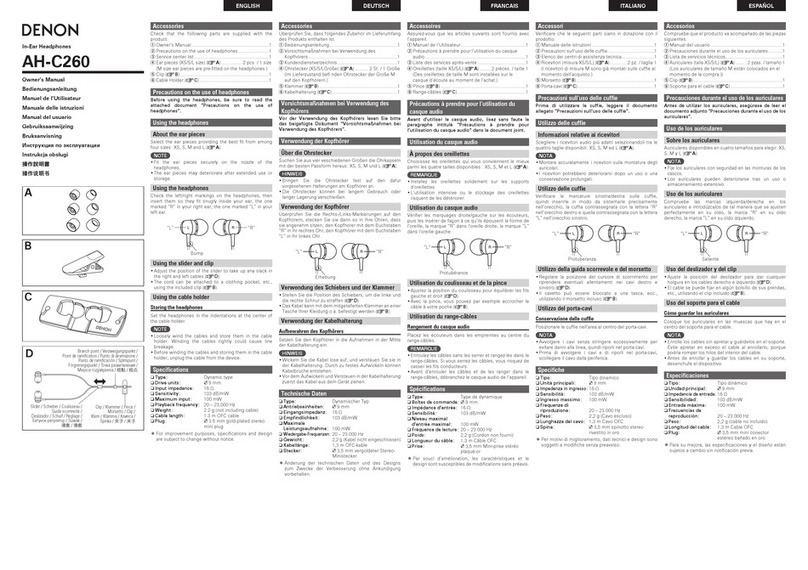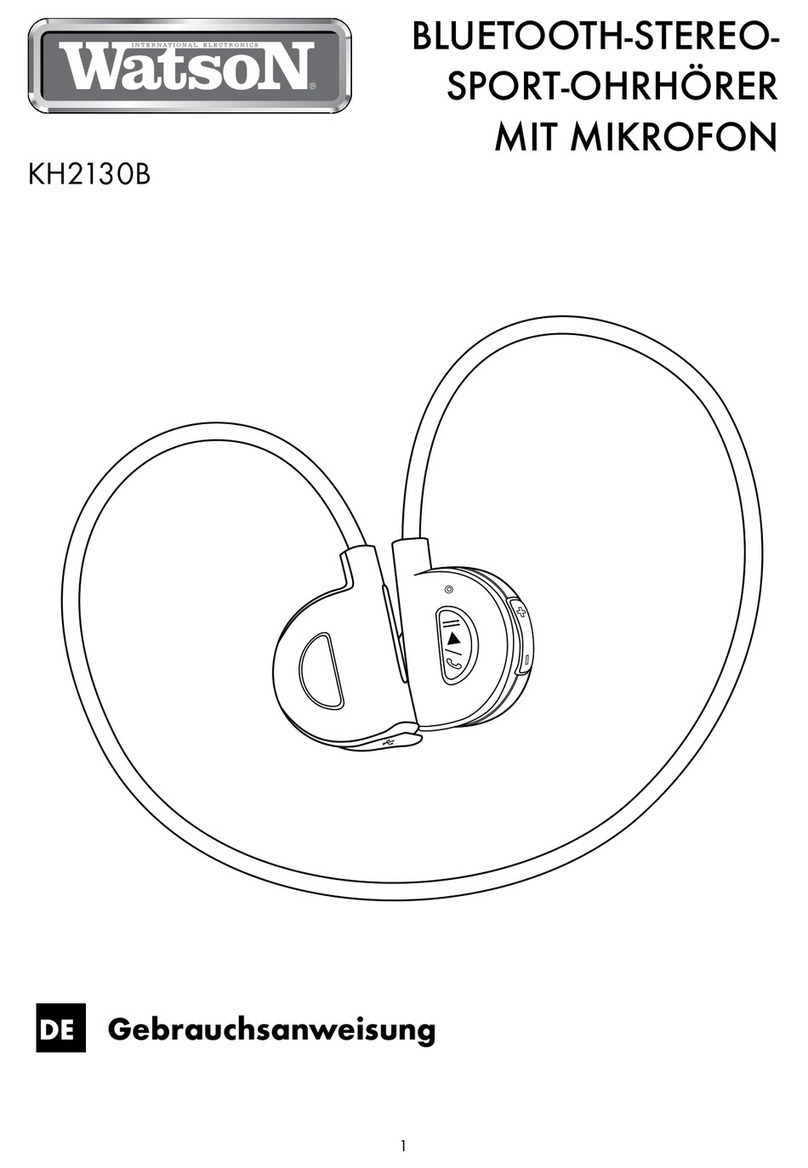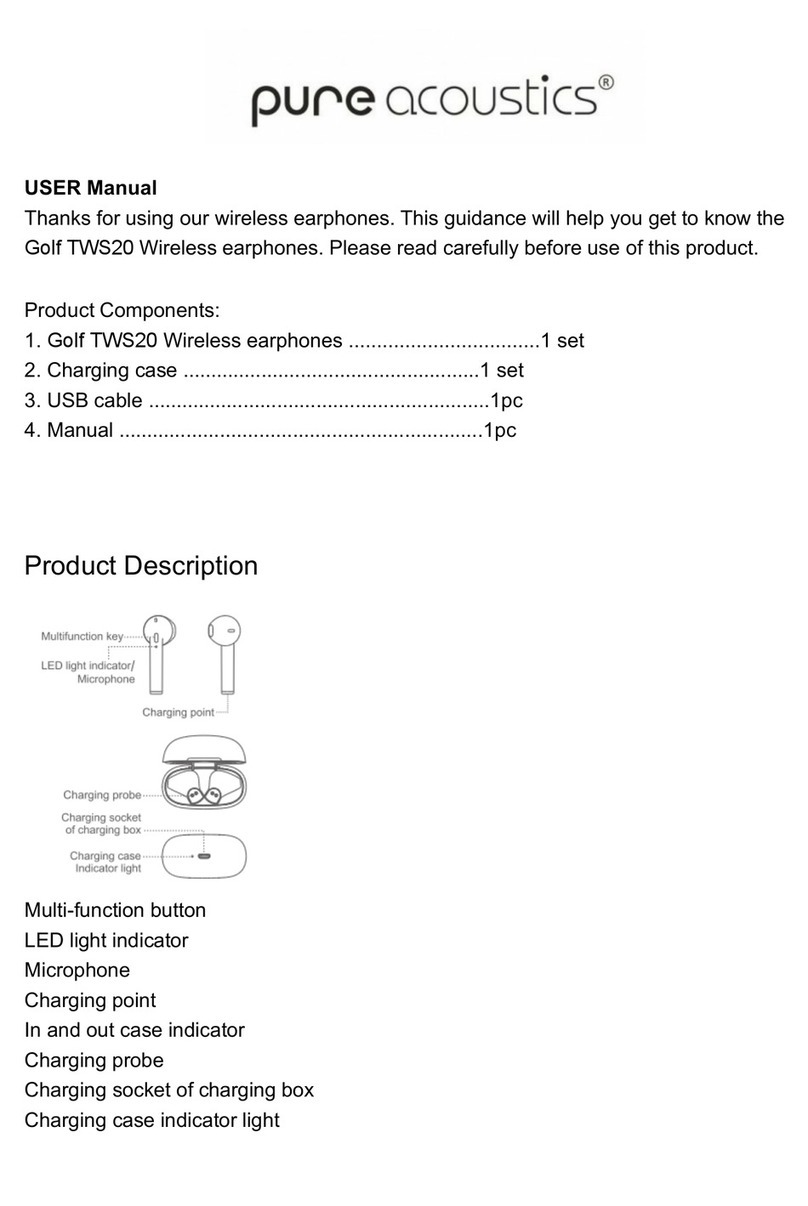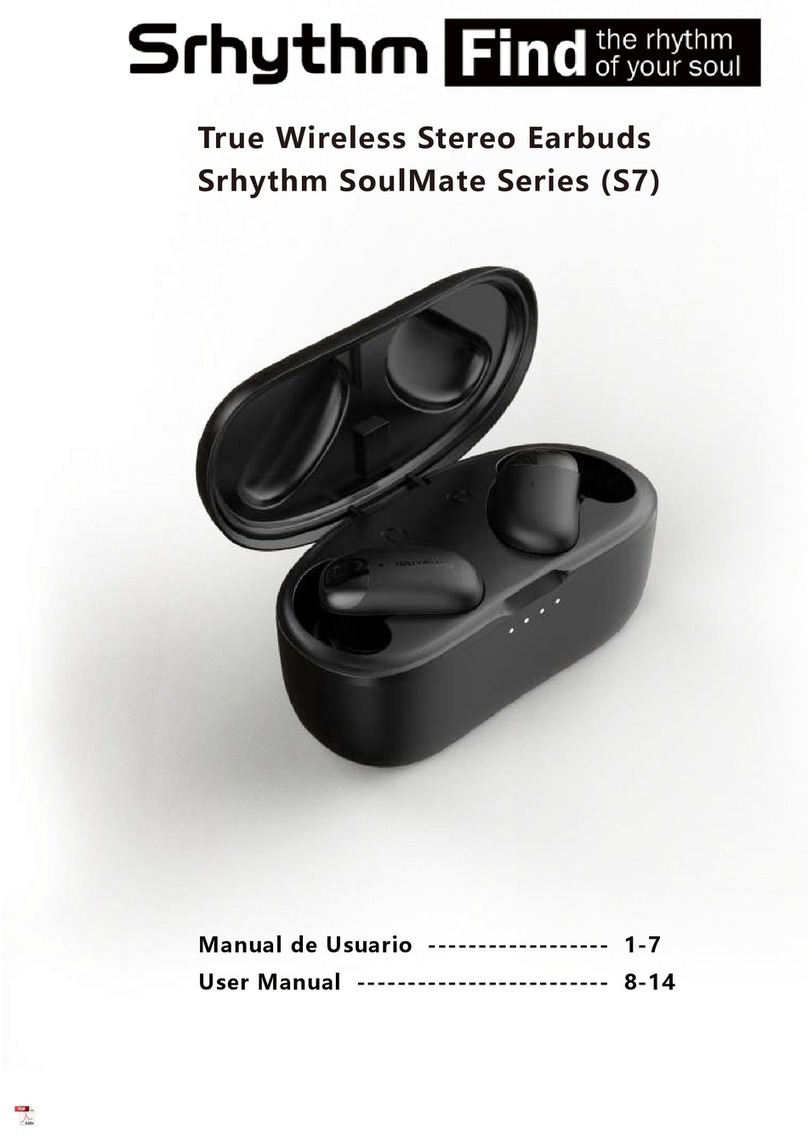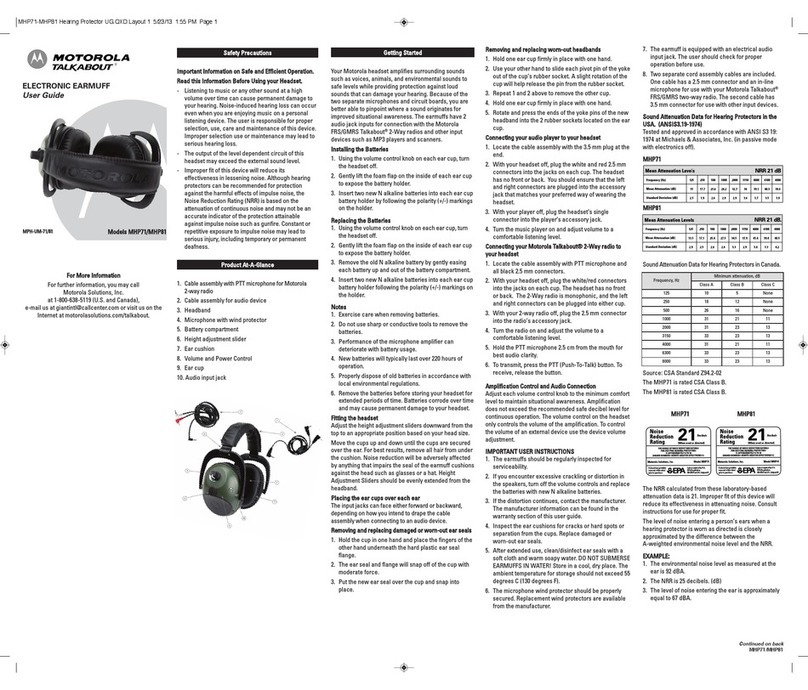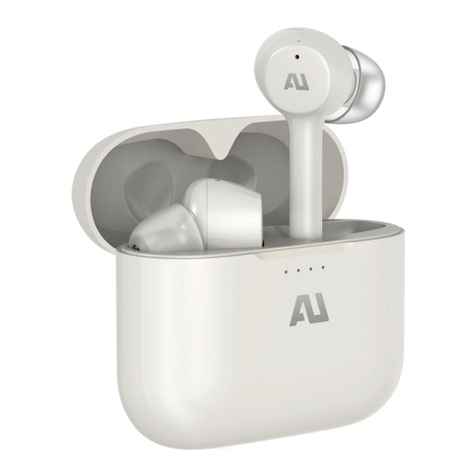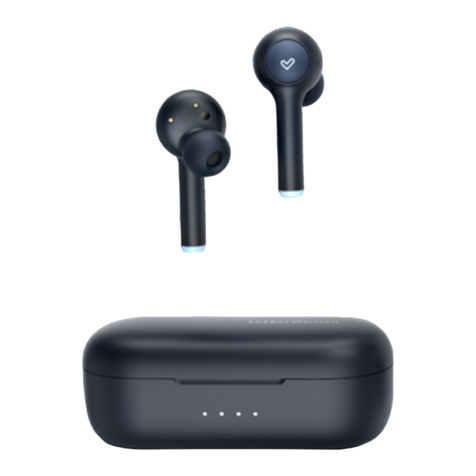5Connect the supplied AC power
adaptor to the transmitter.
Transmitter
to an AC outlet
AC power _-,
adaptor
(supplledl
to DC IN 9V jack
6Rest the headphones on the
transmitter so that the
headphones' contact point
meets the transmitter's contact
pin while making sure that the
charging indicator lights up.
The charging is completed in about
16 hours and the charging indicator
goes off.
jRight
Contact
point
Contact
pin
Left housing
When the indicator is not lit
Check if the right and left headphones
are rested on the transmitter correctly.
The indicator may not be lit if the
headphones' contact point does not
meet the transmitfer's contact pin. Take
off the headphones and place them on
the transmitter again so that the
indicator lights up.
To recharge the headphone
battery after use
Place the headphones on the transmitter
after you use the headphones. Since the
built-in timer recognizes when
charging is complete, there is no need to
take off the headphones from the
transmitter after the completion of
charging.
Notes
• The transmitter automatically turns off
while charging the battery.
• This system is designed to charge only the
supplied rechargeable battery type
BP_HP550 for safety. Note that other types
of rechargeable battery cannot be charged
with this system.
• If a dry battery is installed, they cannot be
charged.
• Do not attempt to use the supplied BP*
HP550 rechargeable battery for other
components. They are for use with this
system only.
• Charge in an environmental temperature of
between 0_C and 40_C (between 32 _Fand
104°F).
Charging and usage hours
Approx. Approx. usage
charging hours time .1
1hour 1 hour and 45
minutes .3
16 hours .2 35 hours .3
*_ at 1 kHz, 1 mW +1 mW output
_: hours required to fully charge empty
battery
*_Time stated above may vary, depending
on the temperature or conditions of use.
6G°I
